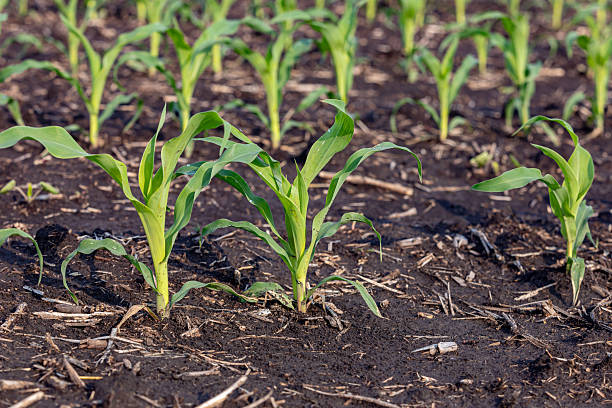
In the rapidly evolving world of agriculture, one of the most valuable tools for farmers, policymakers, and agribusinesses is crop yield forecasting. This process involves predicting the amount of agricultural produce that will be harvested from a specific area during a growing season. Accurate crop yield forecasting enables better planning, resource allocation, market predictions, and risk management, all of which are essential to ensuring food security and economic stability.
What is Crop Yield Forecasting?
Crop yield forecasting refers to the estimation of the quantity of crop production before the actual harvest. It uses historical data, climatic conditions, soil quality, crop type, and advanced technologies like satellite imagery and machine learning to provide reliable estimates. This forecasting helps stakeholders understand what to expect in terms of output, allowing them to make informed decisions about planting, harvesting, storage, and distribution.
Importance of Crop Yield Forecasting
The benefits of crop yield forecasting extend across multiple layers of the agricultural value chain:
- Farmers’ Decision Making:
Forecasting enables farmers to optimize input usage, including fertilizers, water, and pesticides, reducing costs while maximizing output. Knowing expected yields helps farmers decide whether to invest in storage facilities or sell produce immediately. - Policy and Government Planning:
Governments rely on crop yield forecasts to plan food procurement, subsidies, and imports. Accurate forecasts help avoid shortages or surpluses, stabilizing food prices and ensuring food availability. - Market and Supply Chain Management:
Agribusinesses, traders, and exporters use forecasting data to anticipate market supply, adjust pricing strategies, and manage logistics efficiently. - Risk Management:
Crop yield forecasting can identify potential risks due to drought, pest infestations, or diseases early enough for intervention. It also assists insurers in designing appropriate insurance products for farmers.
Methods of Crop Yield Forecasting
Several approaches are used to predict crop yields accurately:
- Statistical and Historical Data Analysis:
By analyzing past yield trends, weather patterns, and soil data, simple models can predict future yields. While useful, these models may not always capture sudden environmental changes. - Remote Sensing and Satellite Imagery:
Satellites monitor crop health through spectral imaging, measuring factors like vegetation indices and moisture levels. This data helps assess crop vigor and predict yields more dynamically. - Crop Growth Models:
These simulate the biological processes of crop development based on weather inputs, soil properties, and crop characteristics. They provide detailed forecasts but require precise input data. - Machine Learning and Artificial Intelligence:
AI-driven models analyze large datasets from various sources to identify patterns and improve forecasting accuracy. They can incorporate real-time weather data, satellite images, and historical yields for better predictions.
Factors Affecting Crop Yield Forecasting
Several variables influence the accuracy of crop yield forecasts:
- Weather Conditions: Temperature, rainfall, sunlight, and extreme weather events significantly impact crop growth.
- Soil Quality: Nutrient levels, pH, and soil moisture affect plant health and productivity.
- Crop Management Practices: Use of fertilizers, irrigation, pest control, and crop rotation techniques alter yields.
- Pests and Diseases: Outbreaks can drastically reduce yields if not managed timely.
- Technological Inputs: The availability of modern tools and practices influences overall productivity.
Applications of Crop Yield Forecasting
Crop yield forecasting serves diverse purposes in agriculture:
- Precision Farming: Farmers use yield forecasts to tailor input applications, ensuring sustainability and cost efficiency.
- Agricultural Policy: Governments utilize forecasts to implement food security programs and manage reserves.
- Financial Planning: Banks and insurers depend on yield estimates to assess creditworthiness and risk.
- Research and Development: Scientists analyze forecasts to study climate change impacts and develop resilient crop varieties.
Challenges in Crop Yield Forecasting
Despite technological advances, accurate forecasting remains complex due to:
- Data Limitations: Incomplete or inaccurate data can undermine model reliability.
- Climate Variability: Unpredictable weather patterns challenge forecasting efforts.
- Scale Issues: Forecasts may vary when moving from local to regional or national scales.
- Technological Gaps: Not all farmers or regions have access to modern forecasting tools.
Efforts to overcome these challenges include improving data collection networks, integrating diverse data sources, and enhancing accessibility of forecasting tools.
Case Study: Crop Yield Forecasting in India
India, being an agrarian economy, has significantly benefited from advancements in crop yield forecasting. Organizations like the Indian Council of Agricultural Research (ICAR) and the Ministry of Agriculture have incorporated satellite data, weather models, and ground surveys to provide timely forecasts for key crops such as wheat, rice, and pulses.
These forecasts guide policy decisions related to procurement, subsidies, and export-import planning. Farmers receive weather advisories and yield estimates via mobile applications, enabling better crop management. This integrated approach has helped improve food security and farmer income.
The Future of Crop Yield Forecasting
The future of crop yield forecasting looks promising with emerging technologies:
- Integration of IoT: Sensors in fields can provide real-time data on soil moisture, temperature, and nutrient levels.
- Big Data Analytics: Combining vast datasets from satellites, drones, and sensors will enhance predictive capabilities.
- Cloud Computing: Facilitates quick processing and sharing of forecasting information.
- Blockchain Technology: Ensures transparency and reliability of yield data across the supply chain.
These innovations will make crop yield forecasting more precise, accessible, and actionable for all agricultural stakeholders.
Conclusion
Accurate crop yield forecasting is a cornerstone of modern agriculture. By predicting harvest quantities ahead of time, it supports smarter farming, effective policymaking, and robust market strategies. While challenges persist, ongoing advancements in technology and data analytics continue to improve forecasting accuracy.
Embracing crop yield forecasting not only enhances productivity and profitability but also contributes to global food security. As agriculture faces pressures from climate change and population growth, reliable forecasting tools will become indispensable for sustainable development.



